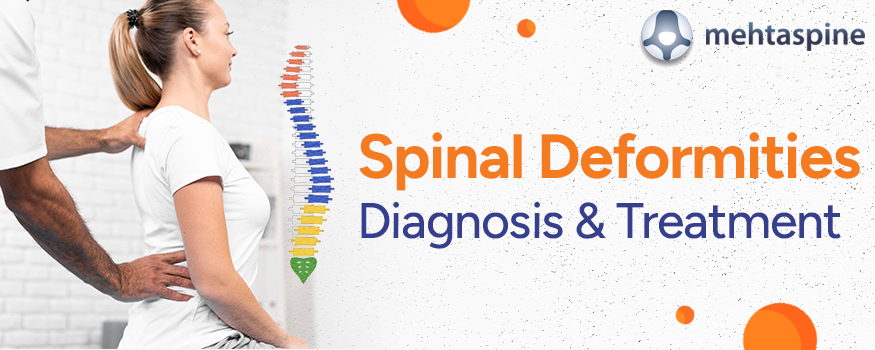Spinal Deformities: Diagnosis & Treatment
Spinal deformities can lead to chronic pain, limited mobility, and long-term complications that significantly impact daily life. These conditions often develop gradually and might go unnoticed until symptoms worsen.
While scoliosis is the most widely known spinal deformity, conditions like kyphosis and lordosis can also affect posture, nerve function, and even internal organs if left untreated. Spinal deformities not only disrupt your body’s alignment but can lead to severe issues such as nerve compression, breathing difficulties, and, in extreme cases, heart complications.
In this blog, we’ll explore common types of spinal deformities, diagnostic procedures, and treatment options to help improve your quality of life if you are affected by these conditions.
What are the types of spinal deformities?
Spinal deformities come in several forms, with scoliosis, kyphosis, lordosis, and spondylolisthesis being the most common:
- Scoliosis involves a sideways curvature of the spine, often detected during childhood or adolescence. It can range from mild to severe and, if left untreated, can lead to chronic back pain, posture issues, and breathing difficulties.
- Kyphosis is an exaggerated forward rounding of the back, giving a hunchback appearance. While mild cases may not cause significant symptoms, more severe cases can lead to pain and difficulty in breathing.
- Lordosis refers to an excessive inward curvature of the lower back. People with lordosis may experience discomfort, lower back pain, and a noticeable arch in their posture.
- Spondylolisthesis occurs when one vertebra slips forward over another, usually due to degenerative changes in the spine. This misalignment can compress nearby nerves, leading to significant pain, stiffness, and, in some cases, radiating pain down the legs.
Diagnosis and Treatment of Spinal Deformities
Diagnosing spinal deformities involves a thorough assessment using X-rays, MRIs, CT scans, and neurological exams. When necessary, pulmonary function tests to evaluate spinal alignment, nerve health, and overall impact on bodily functions. Early diagnosis is crucial in preventing the progression of these conditions and reducing long-term complications.
Spinal deformities can be treated through two critical approaches: surgical and non-surgical methods.
Non-surgical Treatments for Spinal Deformities:
Non-surgical treatments are typically recommended for mild to moderate cases. Physical therapy is a cornerstone of non-surgical Treatment aimed at strengthening the muscles surrounding the spine, improving flexibility, and enhancing posture.
- Bracing may be recommended, especially in younger patients, to halt the progression of scoliosis or kyphosis. The brace supports the spine and prevents further curvature, particularly during growth spurts.
- Anti-inflammatory medications and muscle relaxants may help alleviate pain for patients experiencing it. In some cases, corticosteroid injections reduce inflammation and manage pain. While these treatments don’t correct the curvature, they do offer significant relief from the symptoms.
Surgical Treatments for Spinal Deformities:
Surgical treatments are considered when non-surgical methods are insufficient or when the deformity is causing severe symptoms, including nerve damage or respiratory issues.
Spinal fusion surgery is one of the most common procedures to treat scoliosis, kyphosis, and lordosis. During this procedure, two or more vertebrae are permanently connected, reducing the curvature and stabilizing the spine. For more severe cases, spinal decompression surgery may be required to relieve nerve pressure.
If you’re suffering from spine-related issues, consult Mr. Mehta, a top orthopedic surgeon specializing in spine surgery who offers tailored spinal deformity treatment in UK. Check out the official Mehta Spine website here to book consultations.


